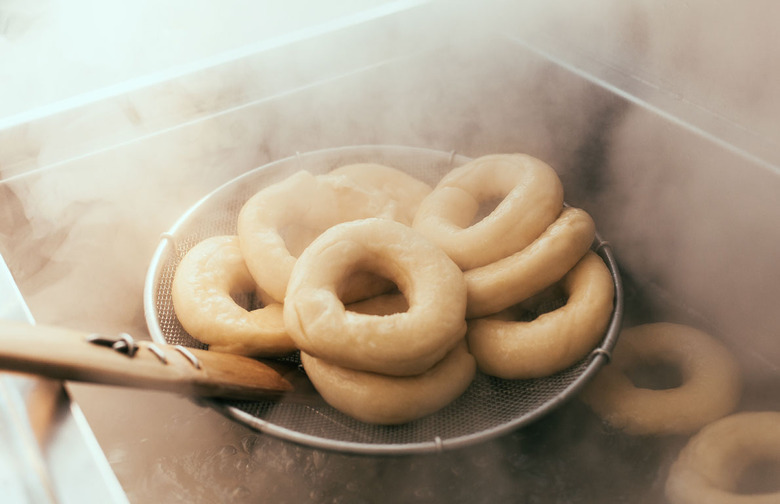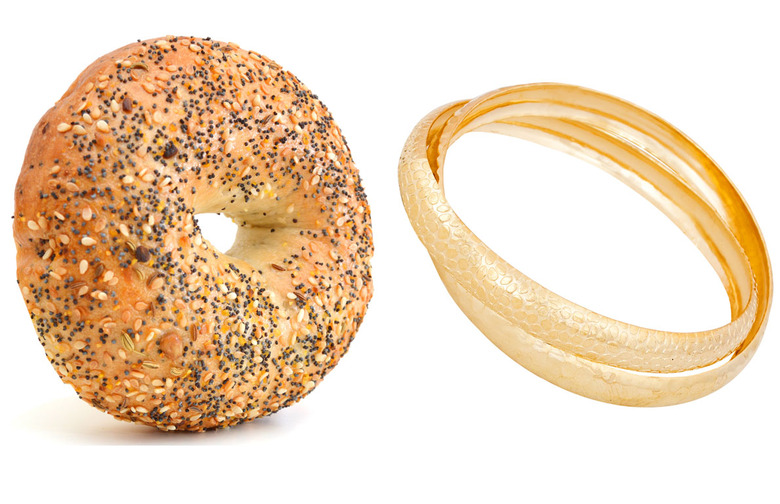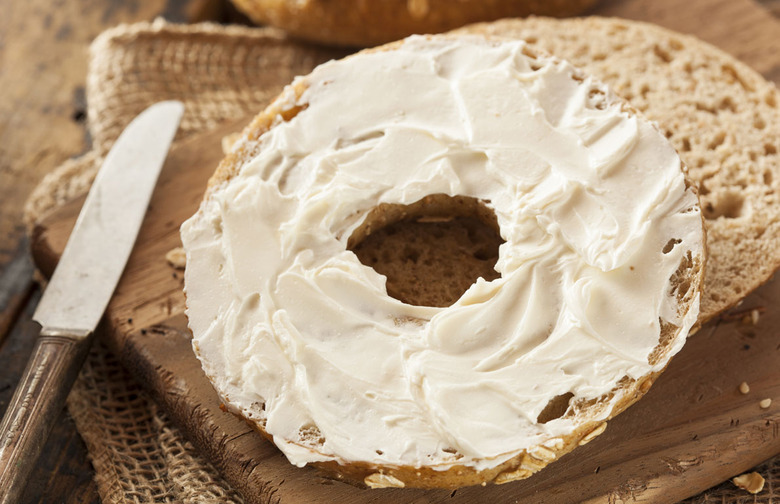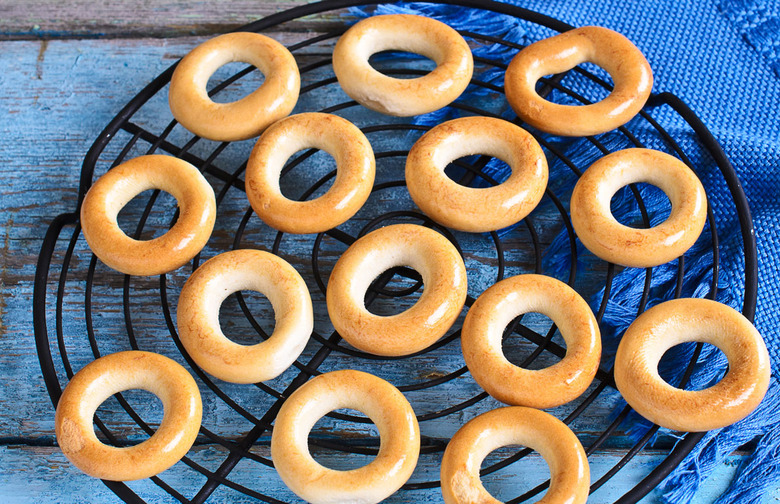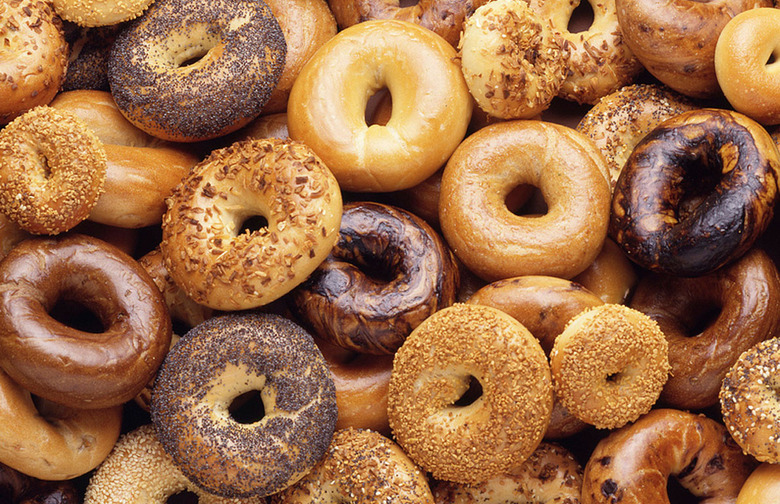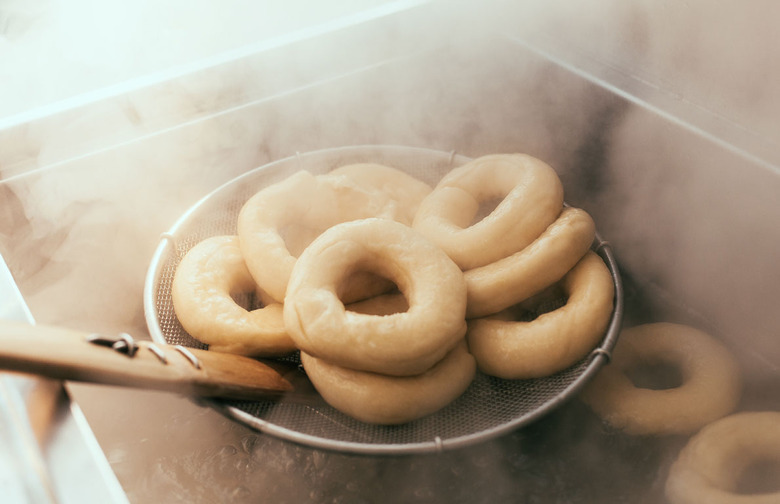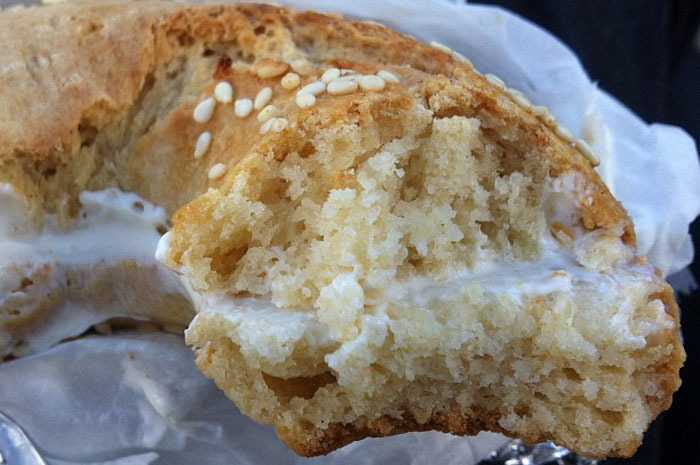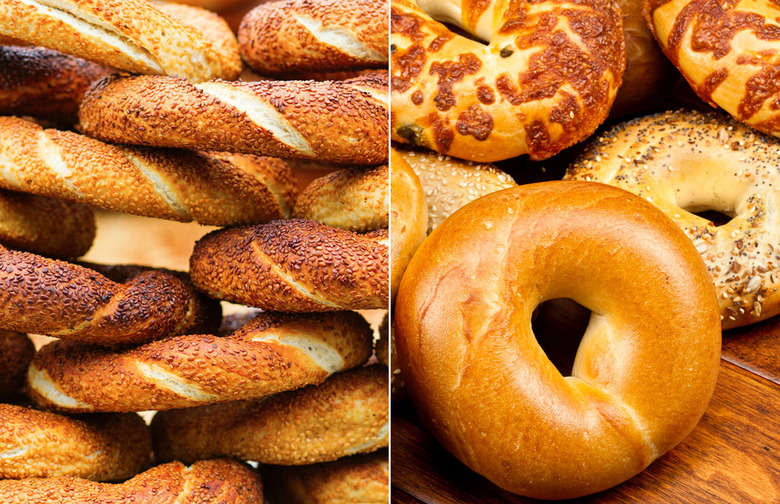10 Things You Didn't Know About Bagels
Any bagel lover will tell you that comparing a well-made bagel to a regular old roll is like comparing caviar to canned tuna. A roll is just some bread with a crust on it, while a bagel — a real bagel, not one sold next to the English muffins at the supermarket — is a true work of culinary art. There's much more to a great bagel than meets the eye, so come along and learn 10 things you probably didn't know about this legendary baked good.
Its First Mention Dates Back to 1610
The bagel was invented in Krakow, Poland, and was a staple of the Polish diet in the 1500s and 1600s. The first written mention of the bagel (spelled "bajgiel") comes from the 1610 Krakow "city regulations," which states that bagels were a popular gift for women in childbirth. The earliest appearance of the word in English, spelled as we now spell it, on the other hand didn't come until 1932.
Its Name Has a Very Lengthy History
The word bagel has a fairly lengthy etymology. The word apparently derives from the Yiddish beygel, which in turn can be traced to words in Middle and Old High German and Old English. The word's ancestors in various languages include būgan, bēag, böugel, and beygl, all of which mean approximately the same thing: "ring."
The Hole Serves a Purpose
That hole in the middle of the bagel isn't there for decoration. It allows the bagel to cook faster and increases its surface area, leading to more crust. Also, back in the early days of bagelry, bagels were displayed on wooden dowels up to a yard in length; if you wanted one, all you had to do was tear it off (this is still a common practice among bagel shops in London). Similarly, in Eastern Europe and New York, especially on pushcarts, bagels were strung together for easy display and transport.
There Was Once a Bagel Union in New York
As the wave of Eastern European immigration brought millions of new workers to New York in the early 1900s, just about every bagel shop was controlled by, yes, the bagel-makers union: Bagel Bakers Local 338, to be exact. These workers spent long hours in hot, steamy basements, making bagels by hand. It was a rough job, but they laid the foundation for the bagels we know and love today. In the early 1970s, with large-scale commercial bagel-making taken over by machines, the union merged with the Bakery, Confectionery, and Tobacco Workers International Union.
Early Bagels were Much Smaller Than They Are Today
If you were to travel back in time to eat a bagel from the early 1900s, you'd find it to be much smaller than the standard New York bagel of today, and also a bit firmer and chewier. Bagels have always gone stale pretty quickly, and, in the days before toasting, if they weren't eaten within a day they'd need to be dipped in tea or some other beverage to be softened. There's a great Milton Berle quote about this very dilemma: "We used to buy day-old bagels. They were so hard we had to hammer the butter on."
The Lender Family Brought Bagels to the Masses
Because of this lack of longevity, most people outside of the New York area didn't even know bagels existed until the mid-1900s. In 1927, Harry Lender opened a bagel bakery in New Haven, where nearly one-sixth of the population was Jewish; it was one of the first bagel bakeries opened outside of New York. Most bagels were sold on Sunday mornings — upwards of 6,000 by the 1950s — so in order to meet this demand he devised a method for freezing the bagels so that they could be baked throughout the week. That, combined with additional innovations like pre-slicing the bagels, allowed the company to rapidly grow, and within twenty years, under the stewardship of Harry's son Murray Lender, supermarkets across the country were getting shipments of bagels for the first time. In 1962, Lender's started using an automated bagel-making machine invented by a Canadian entrepreneur, which extended their reach still further.
Bagels Were Brought into Space in 2008
In a 2008 Space Shuttle mission to the International Space Station, Montreal-born NASA astronaut Gregory Chamitoff brought 18 sesame seed Montreal-style bagels from Montreal's Fairmount Bagels, owned by his cousin, along with him. It is not known whether or not he packed cream cheese too.
Real Bagels are Boiled
Ever wonder what sets bagels apart from traditional bread, besides the hole? After the dough is kneaded, formed, and proofed, the bagels are briefly boiled in water, which occasionally contains additions like lye, baking soda, or honey, before being baked. This gives them that trademark golden, chewy, crunchy crust. If you even encounter a mass-produced bagel that's wan and soft, chances are it's been steamed instead of boiled.
Gluten-Free and Low-Carb Bagels are Higher in Fat
Because the only ingredients in traditional bagels are flour, malt, salt, water, and yeast, they contain very little in the way of fat; only a couple grams even in the big ones. But because of the ingredients that replace wheat flour in gluten-free and low-carb bagels, these varieties can contain upwards of nine grams of fat.
There are Dozens of Bagel Varieties Worldwide
New York bagels aren't the only variety worth checking out. Montreal-style bagels, which have larger holes, are crunchier and sweeter. The Russian bublik, Finnish vesirinkeli, and Polish obwarzanek are larger, with a wider hole; ring-shaped beugel are sold in Austria around Eastertime, and in Turkey the smaller simit are hot, soft, and crunchy — and usually much larger.
